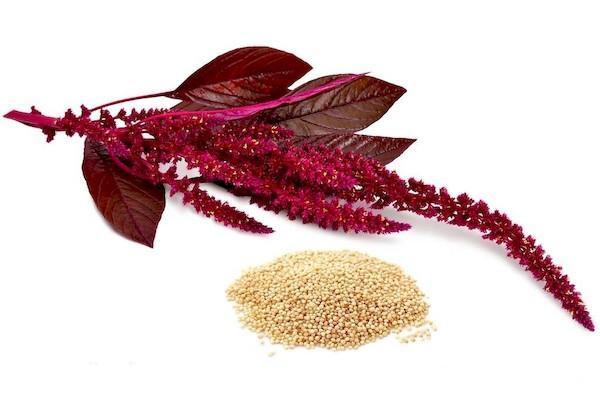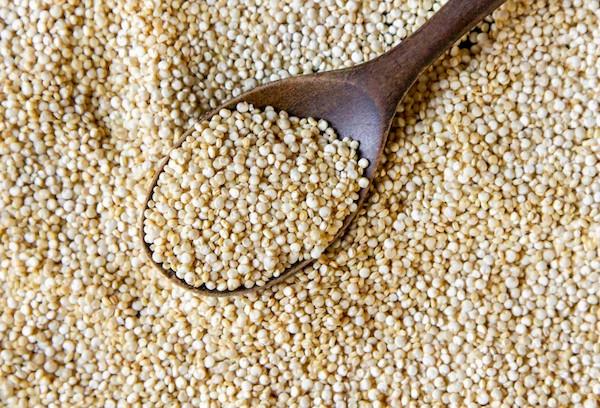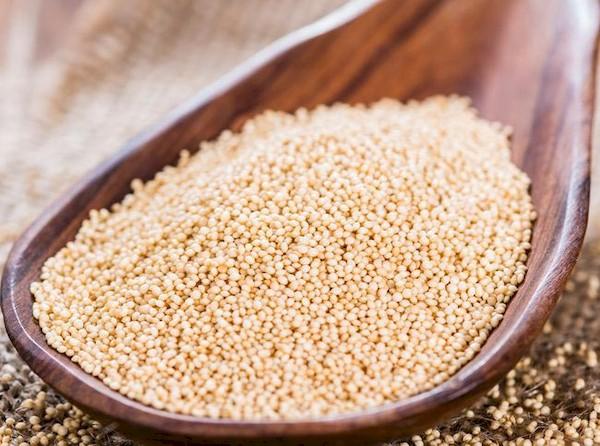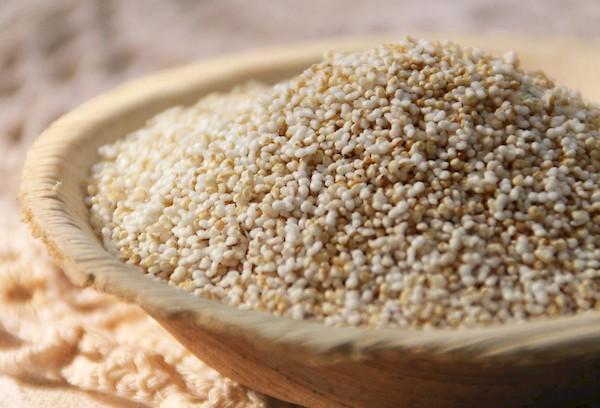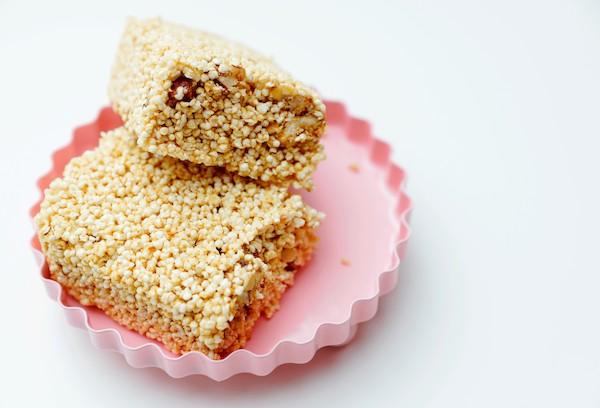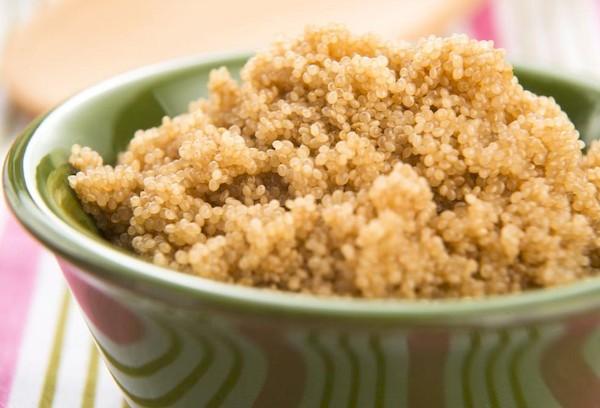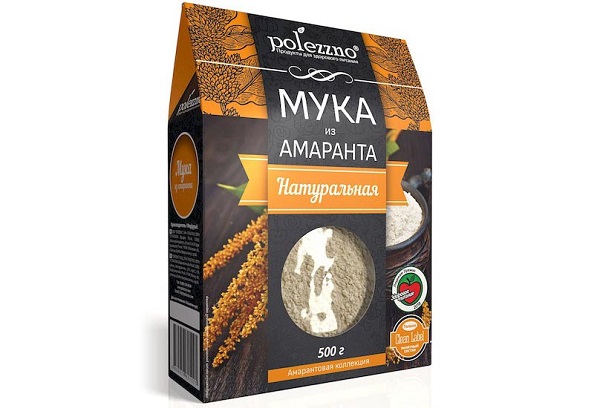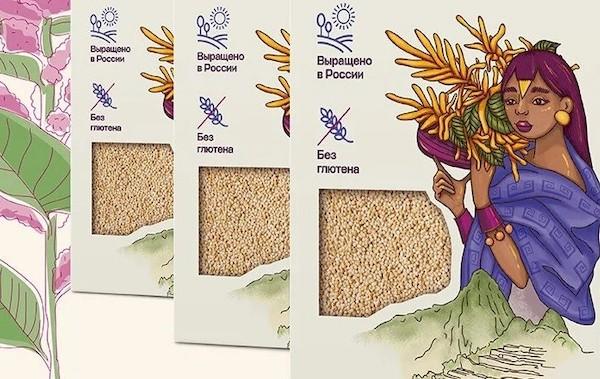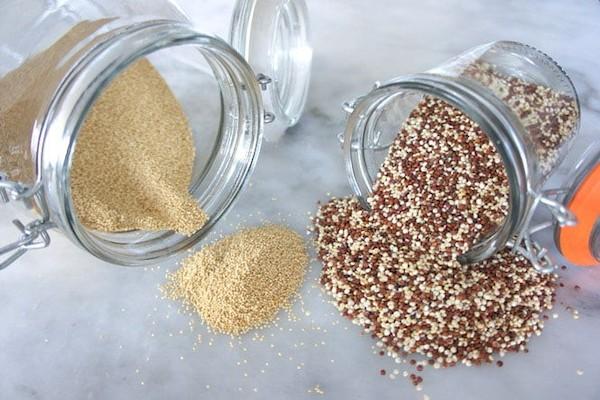What is amaranth: why are the seeds eaten and what 10 dishes can be prepared?
Content:
In recent years, interest in amaranth cereals has increased significantly, and this is not surprising. Amaranth is a gluten-free cereal with a high protein content (content up to 16%). It is consumed in the form of porridges, added to baked goods, salads, planted on microgreens, and made into popcorn. The seed looks almost identical to quinoa, but several times smaller. Amaranth is similar in size to poppy, only light in color. The aroma of the cereal is specific, with earthy notes. After heat treatment it becomes nutty, and the consistency of the porridge is compared to pike caviar.
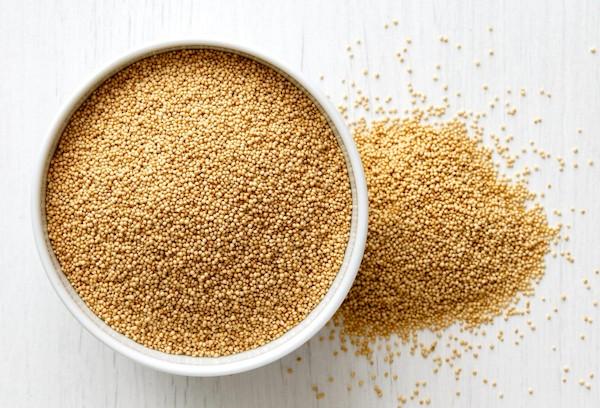
What is amaranth made from?
To better understand what amaranth is, let’s briefly tell its history. The plant from which the cereal is made is of South American origin. It was eaten by the indigenous peoples of Latin America, and in particular by the Incas. About 8 thousand years ago, amaranth was revered as a valuable source of food and was also used in rituals.
Amaranth is a symbol of immortality among ancient peoples.Translated from Greek it means “unfading flower.”
Travelers who first arrived on the continent found certain similarities with European pigweed. Both plants have edible leaves as well as seeds. The Indians used amaranth juice as an antidote, rubbed it on scars, and disinfected wounds and ulcers. What does amaranth look like:
This is a pseudocereal crop of the Amaranth family. In Russia, the plant was treated as a weed for a long time. It was only in the 18th century that the feed and nutritional value was discovered. By the way, to this day, the wild variety of amaranth amaranth amaranth causes a lot of inconvenience in the areas due to its fertility. One copy produces up to 500 thousand seeds. Photo:
The cereal, of course, is made from cultivated varieties of amaranth, which have large and tasty seeds. But still, 1000 seeds weigh only 0.4 g.
Interesting fact. There is a version that amaranth appeared on the territory of modern Russia earlier than in South America. Allegedly, our ancestors brought it to the hot continent, and not vice versa. From time immemorial, in Rus' they baked amaranth bread and ate amaranth porridge, thanks to which they lived up to 300 years. Peter the Great banned the cultivation of the crop, and gradually they forgot about it.
What is contained in 100 grams of amaranth
They call amaranth grains in many different ways: “healer of the 21st century”, “food of the gods”, “giving eternal youth”. To have a good idea of what its effect on the human body is, let’s study the composition. 100 grams of amaranth contains:
- proteins – 13.6 g;
- fat – 7 g;
- carbohydrates – 58.6 g;
- water – 11 g;
- ash – 2.9 g;
- dietary fiber – 6.7 g.
The calorie content of the raw product is 371 kcal.
Amaranth is also rich in B vitamins (10-30% of the daily value per 100 g), contains an impressive amount of vitamin E (15 mg), fatty acids, including polyunsaturated Omega 6 in the amount of 2.7 g, which is 58% of the daily value . Cereals are a valuable source of essential amino acids that are not produced in the human body and must be supplied with food. In particular, it contains a lot of lysine (747 mg), which prevents early baldness and helps build muscle mass.
Raw seeds contain a lot of phosphorus, magnesium, iron, copper - about half the daily requirement. This is a valuable source of selenium, zinc and manganese, necessary for health, beauty and proper functioning of the reproductive system. Amaranth contains sulfur, potassium and calcium (13-20% of the daily value).
Interesting fact. Amaranth contains a rare substance, squalene, which belongs to the group of carotenoids. The same substance was found in the liver of a deep-sea shark in Japan in 1906. Scientists have found that it helps withstand prolonged oxygen starvation and hypoxia. In humans, squalene has a powerful antioxidant and anti-carcinogenic effect, strengthens vascular walls, and reduces oxidation processes in the body. Amaranth oil contains the most squalene.
Types of cereals
White amaranth is used to produce cereals. Black amaranth is an oilseed variety, that is, it is used to obtain amaranth oil. It contains more squalene. Black seeds are also planted to produce healthy microgreens.
The following types of cereals are available on sale:
- Polished amaranth. Not suitable for germination, and is used exclusively in cooking. It has the appearance of white and yellow round-shaped seeds, very similar to poppy seeds.
- Coarse amaranth flour. Don’t let the word “flour” in the title confuse you. The product is actually crushed amaranth seed. This type of cereal produces the most delicate milk porridge and sweet amaranth porridge. Cereals are added to cutlets instead of semolina.
- Flakes. Processed and flattened grain. Like oatmeal, amaranth flakes do not require cooking, but are simply poured with boiling water or milk (yogurt).
The most common plant on store shelves is amaranth, which looks like yellow seeds with black spots. The black seed is a seed in a shell, and the yellow seed is a peeled seed.
What is prepared from amaranth: 10 popular dishes
Amaranth is widely used in the form of flour. Bread, crispbread, cereal, pies, pancakes, chips, all kinds of desserts, pastries, dumplings, pasta and other flour products for people with gluten intolerance are prepared with amaranth flour. It gives dishes a light nutty taste. The baked goods are airy and do not become stale or moldy for a long time.
Now about what cereal is used for. It is mainly boiled as a side dish. Amaranth milk porridge, which vaguely resembles semolina, but is much healthier, turns out to be especially tasty. If this option seems banal or the porridge is simply boring, we will tell you what to cook from amaranth:
- baked zucchini stuffed with carrots, onions, avocado, amaranth, garlic;
- pumpkin porridge;
- gourmet tabbouleh salad made with amaranth, quinoa, salmon, edamame beans, peas and tzatziki sauce;
- raw food porridge (soaked seeds) with fruits, nuts and seeds;
- PP smoothie with banana, peach, apricot, blueberry, yogurt, chia, flax;
- liver or carrot amaranth cutlets;
- a simple salad with tomatoes, spinach, boiled seeds and lemon juice;
- green cleansing smoothie with microgreens and amaranth seeds;
- PP pancakes;
- puffed amaranth (mini popcorn).
You can also make flour from amaranth grains at home. To do this, you need to grind the seeds in a manual coffee grinder. The grinding is coarse, so homemade amaranth flour is mixed with purchased rice, wheat and others. It is good to use for breading, in smoothies and salads.
How to choose quality amaranth in the store
In order not to be disappointed in the product, and to get the maximum benefit from it, you need to be able to distinguish a high-quality product from a low-quality one. When choosing, you should be guided by the following criteria:
- Packaging integrity. The product must be well packaged so that it does not become damp or go rancid ahead of time. The whole package is a guarantee that the cereal is not infested with bugs and various kinds of pests.
- Best before date. Over time, amaranth grain loses its supply of nutrients, becomes hard, tasteless, and may have an unpleasant odor. It is worth giving preference to a fresh product. Please note that the shelf life is 12 months, provided that the amaranth is stored at a temperature of +5+20 degrees and air humidity of no more than 70%.
- Grain size. The larger the seeds, the tastier the amaranth porridge will be. This means that this is a cultivated variety used for the production of cereals.
- Smell. Should be grassy or smell a little earthy. A musty, pungent aroma from cereal is a sure sign of spoilage.
- Presence of foreign particles (cleanliness). Premium quality grains do not contain sand and small debris, which make it quite difficult to wash the product out.Also, you will not find black seeds in the package or will find them in minimal quantities, which indicate an insufficient degree of purification and sorting.
If you buy flour, know that high quality amaranth flour (grade 1) is airy, soft, with a noticeable creamy tint and a specific aroma.
Attention! You should not buy seed and ornamental amaranth for consumption. At a minimum, the seeds are tasteless, and at a maximum, they can be treated with chemicals that protect the plant seedlings from pests.
What is the difference between amaranth and quinoa?
Amaranth and quinoa are related plants, so their seeds, composition, benefits and harm are largely similar. South America is considered the birthplace of both plants. The difference between quinoa is that it originally grew high in the mountains, on the highest mountain system in the world, the Andean Cordillera (Andes). The difference between them can be seen with the naked eye. Photo:
5 differences between amaranth and quinoa:
- several times smaller;
- quinoa is white, red, black, amaranth groats are mostly only yellow.
- found in pasta, baked goods (flour);
- can be decorative, fodder, vegetable;
- Amaranth has a rich flavor, while quinoa (especially white) has a more neutral flavor.
Question answer
Where to buy amaranth grains?
Until recently, this type of cereal could only be purchased in health food stores, with vegetarian food, or ordered delivery from Peru and other countries. Today, amaranth grains are available in almost every supermarket. It is also grown in Russia, produced by individual entrepreneurs and large brands Honest Food, Ufeelgood, Altai Power, S. Pudov, Amarancho and others. You can easily order the product on Ozone, Valberis, and other marketplaces.
How to cook correctly?
It should be taken into account that the cereal does not boil much. Seeds increase approximately 2-2.5 times. Before cooking, it is better to soak them in cold water for 4-8 hours and then rinse using a fine-mesh sieve. Dry cereal is added in a thin stream to boiling water or a mixture (1:1) of milk and water. For two servings you will need 100 g of amaranth and 200 ml of liquid. Cook the porridge over very low heat, covered, until the seeds have absorbed all the moisture (about 10 minutes).
Who benefits from using it?
Amaranth is one of the healthiest cereals for people who, for various reasons, need to lose weight, allergy sufferers, patients with diabetes, celiac disease, and vegetarians.
What beneficial properties does it have?
When consumed 1-2 times a week, amaranth porridge reduces the risk of cardiovascular diseases, normalizes cholesterol levels, and reduces inflammatory processes in the body. It promotes healthy metabolism and digestion, restores microflora in the intestines. Amaranth is considered a powerful immunostimulant, an adaptogen, and a plant that prolongs youth. Potency improves in men, libido increases in women. It also has a positive effect on the condition of the skin, hair, nails, improves sleep and the state of the nervous system.
What are the contraindications?
Amaranth should be used with caution by people suffering from cholecystitis, gallstones, urolithiasis, peptic ulcers, pancreatitis, gastritis, rheumatoid arthritis, and kidney diseases.
At what age can children?
Amaranth porridge is recommended to be given to children after two years of age. In small doses, in soup, salads, pancakes, amaranth can be introduced into a child’s diet earlier. Children with gluten intolerance eat cereal from 6-8 months.But it is better to first consult with a pediatrician or attending physician if the baby has one or another diagnosis. The fact is that the product contains phytic acid, which slows down the absorption of some beneficial substances. The adult’s body reacts poorly to their presence, but the baby may have negative consequences.
Is it possible to eat during pregnancy and breastfeeding?
The product is rich in all kinds of micro- and macroelements, vitamins, amino acids, fatty acids, and high-quality vegetable protein. It is not only possible, but also useful to eat during pregnancy and breastfeeding. Amaranth porridge, amaranth oil, and products made from amaranth flour are allowed. Of course, you should not overuse the product or try it for the first time immediately after the birth of your baby.
Amaranth porridge is a dish for everyone. Not everyone likes this healthy cereal. But you shouldn’t give it up right away. Try cooking it with milk, chicken or mushroom broth, adding pieces of baked spicy vegetables or fresh fruit. Season with delicious sauce, yogurt, honey, jam. And if you have time, prepare a vitamin salad, delicious carrot-amaranth cutlets, stuffed zucchini or popcorn that will delight both children and adults.
